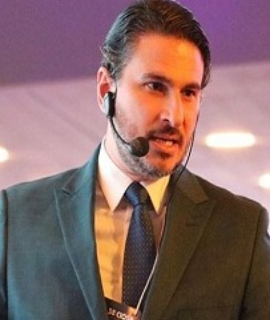Title: 3d Bridge augmentation concept
Abstract:
Although implant treatment has evolved since first Branemark rehabilitaon the need for a bone housing is sll primary task. Many mes oral surgeon face huge bone defects that limit implant supported prosthesis and have to decide what kind of regenerave treatment to proceed, and can be lost among the variety of procedures that are find in literature. One of the biggest problem is how to summarize the surgical protocol with many different opons, from autologous block gra to xenogenic and synthec parcles. Our purpose is to create a method to link the regenerave protocol to the amount of bone defect, in order to give predictability to treatment. The classificaon of the mepoint, immediate or late, lead to a maneuver that tend to maintain the ridge architecture, and have the benefit of most esthec result, and can be classified as ridge preservaon - 4 walls defect - or ridge regeneraon - 3 walls defect - associated or not with the immediacy of implantaon when the approach is simultaneous to tooth loss. On the other hand, aer the healing period, in the late approach, the objecve of treatment is to restore the ridge architecture, and aesthec results can be achieved but with less predictability. The predictability of treatment can be guarantee when rigid protocols has been followed, and the knowledge of bone defect classificaon assure the right treatment to be done. This lecture will show the different aspect of horizontal bone defect, and the influence of cancelous bone between the buccal and lingual corcal and how it permits a more flexible treatment protocol, and how the lack of cancelous bone limits it. At lest, how to give predictability when treang 3d defect (vercal bone defect), and the new perspecve in biomaterials that can be used.




